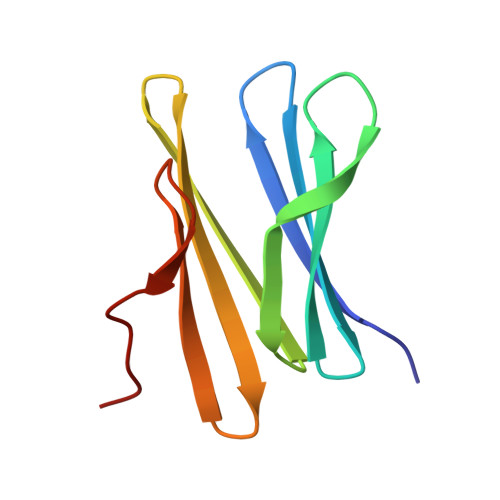The Hidden Conformation of Lewis X, a Human Histo-Blood Group Antigen, is a Determinant for Recognition by Pathogen Lectins
Topin, J., Lelimousin, M., Arnaud, J., Audfray, A., Perez, S., Varrot, A., Imberty, A.(2016) ACS Chem Biol 11: 2011
- PubMed: 27198630
- DOI: https://doi.org/10.1021/acschembio.6b00333
- Primary Citation of Related Structures:
5AJB, 5AJC - PubMed Abstract:
Histo-blood group epitopes are fucosylated branched oligosaccharides with well-defined conformations in solution that are recognized by receptors, such as lectins from pathogens. We report here the results of a series of experimental and computational endeavors revealing the unusual distortion of histo-blood group antigens by bacterial and fungal lectins. The Lewis x trisaccharide adopts a rigid closed conformation in solution, while crystallography and molecular dynamics reveal several higher energy open conformations when bound to the Ralstonia solanacearum lectin, which is in agreement with thermodynamic and kinetic measurements. Extensive molecular dynamics simulations confirm rare transient Le(x) openings in solution, frequently assisted by distortion of the central N-acetyl-glucosamine ring. Additional directed molecular dynamic trajectories revealed the role of a conserved tryptophan residue in guiding the fucose into the binding site. Our findings show that conformational adaptation of oligosaccharides is of paramount importance in cell recognition and should be considered when designing anti-infective glyco-compounds.
Organizational Affiliation:
CERMAV UPR5301, CNRS, and Université Grenoble Alpes , BP 53, 38041 Grenoble cedex 9, France.






















